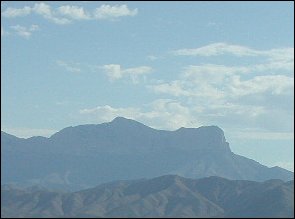

Many bits of evidence helped change Charles Darwin from a creationist to an acceptance of evolution. One was seeing that similar environments often were inhabited by very dissimilar species. He observed that oceanic islands, those never connected to continent, had organisms similar to those on the nearest mainland but often of different species. He noted that the Cape Verde Islands off the west coast of Africa and the Galápagos Islands west of South America had some species that occur nowhere else in the world, but in each case the species are most similar to forms on the nearest mainland. These made no sense if species were created in place; why should they resemble nearby forms? And if immigrants from the mainland, then why didn't they occur also on the mainland?
This tendency of isolated populations of immigrants to evolve into
different species is part of the reason for the great biodiversity of the Southwest and
Mexico. No oceanic islands, of course, but the next best thing—mountains soaring into
cooler and wetter heights, isolated by the dry desert between.

Contributor: Arthur H. Harris, Laboratory for Environmental Biology, Centennial Museum, University of Texas at El Paso.
Desert Diary is a joint production of the Centennial Museum and KTEP National Public Radio at the University of Texas at El Paso.

The Guadalupe Mountains of Texas and New Mexico rise from the desert floor, supporting woodlands and forest at their highest elevations. Photograph by A.H. Harris.